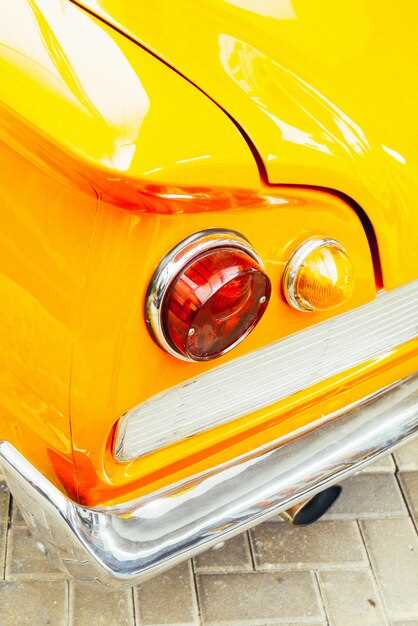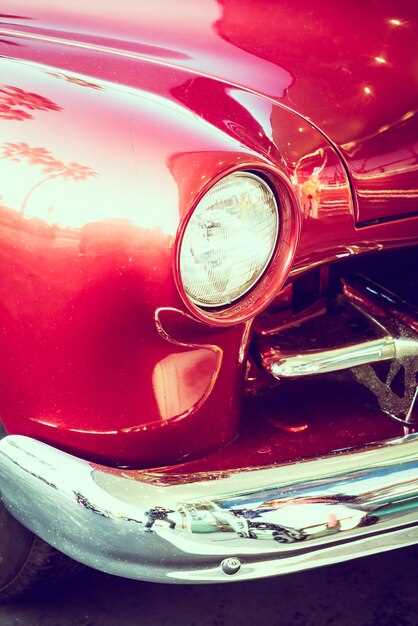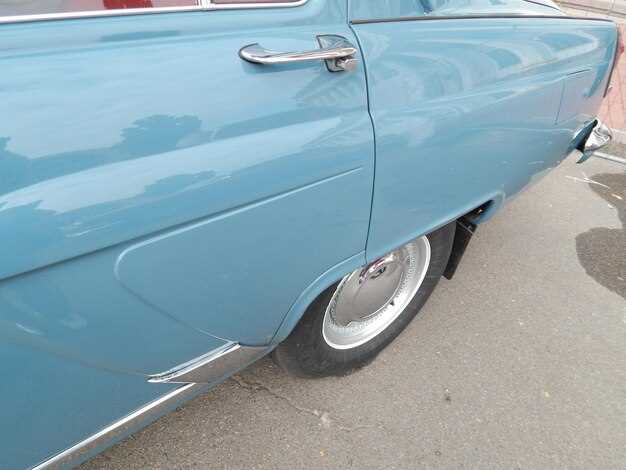

The world of classic cars continues to captivate enthusiasts and collectors alike, with restoration jobs breathing new life into these timeless vehicles. One of the most significant elements of a successful restoration is undoubtedly the choice of paint. In 2023, various colors are gaining popularity, reflecting current trends while also paying homage to the rich history of classic automotive design.
Classic cars, often revered for their iconic shapes and distinctive features, deserve a color palette that highlights their unique characteristics. As restorers explore jobs that bring these vehicles back to their former glory, the selection of paint becomes a vital decision. Whether aiming for a flashy finish or a subtle tone, the right color can enhance the classic car’s aesthetic and personal statement.
This year, we observe a resurgence of vibrant hues alongside the timeless classics that have stood the test of time. Each year brings new innovations in paint technology, allowing for more vivid colors and finishes that can transform a classic car into a stunning piece of art. Let’s explore the most popular colors for restored classic cars in 2023 and see how they reflect both modern preferences and nostalgic charm.
Top Choice Color Palettes for Classic Cars Among Enthusiasts

When it comes to restoring classic cars, the selection of paint colors can significantly affect their appeal and market value. Enthusiasts often gravitate towards timeless palettes that reflect the car’s history while adding a modern twist. Here are some top choices.
First, vibrant reds and deep blues remain popular choices. These bold colors enhance the classic lines of vehicles, drawing admiration from onlookers. Notably, shades like Ford’s ‘Rangoon Red’ or Chevrolet’s ‘Marina Blue’ evoke nostalgia while still capturing attention on the road.
In contrast, pastels have gained prominence among restorers seeking a softer aesthetic. Colors like mint green and pale yellow are reminiscent of mid-century designs, making them excellent options for cars from the 1950s and 1960s. These hues provide a unique charm that stands out in car shows.
Black and white are timeless staples in any classic paint job. Glossy black offers a sleek, sophisticated look that accentuates body curves, while pristine white can emphasize details and create a clean appearance. Customary two-tone combinations, such as black over white, continue to captivate enthusiasts, showcasing skillful craftsmanship in paint jobs.
Moreover, earth tones such as olive green and burnt orange have emerged as trendy alternatives, reflecting a growing appreciation for more subdued aesthetics. These colors resonate with classic car lovers who prefer a vintage feel without the flashiness that brighter options might bring.
Finally, metallic finishes are increasingly favored for their depth and elegance. Custom blends, such as copper, gold, or deep metallic blues, add a contemporary flair while enhancing the classic appeal of the vehicle. Such innovative paint jobs can dramatically transform familiar models into standout pieces.
In summary, selecting the right color palette for restored classic cars involves balancing tradition and personal taste. Whether choosing bold, pastel, or metallic finishes, the perfect paint job can elevate a classic car’s status, making it a cherished piece for any enthusiast.
Impact of Cultural Trends on Car Color Selection This Year

In 2023, cultural trends have significantly influenced the choices made by car enthusiasts when restoring classic vehicles. The shifts in societal preferences, driven by various media and fashion movements, have led to an evolution in paint color selections that reflect current aesthetic values.
One of the notable trends this year is the resurgence of vibrant and bold colors. As people seek to express individuality and stand out in a crowded world, restorers are opting for eye-catching hues that evoke nostalgia, while also making a cultural statement. This reflects a broader trend where personal expression through bold colors is celebrated in various aspects of life, including fashion and home decor.
Additionally, the impact of sustainability has begun to permeate the classic car restoration scene. Eco-friendly paint options have become more popular, with a focus on sustainable brands. This trend aligns with a growing societal awareness of environmental issues and has created new jobs in the automotive industry dedicated to developing and applying these innovative products.
Furthermore, social media continues to play a pivotal role in the dissemination of color trends. Platforms like Instagram and TikTok showcase restored cars, influencing viewers to pursue similar color palettes. This visual impact drives restorers to embrace trending shades, which often leads to a cycle of color popularity dictated by online engagement.
In conclusion, the intersection of cultural trends with the world of classic car restoration in 2023 has led to a dynamic array of color choices. As enthusiasts navigate these influences, the selection of paint colors reflects not only personal tastes but also broader societal movements, stimulating creativity and strengthening community connections within the automotive sphere.
How to Achieve a Timeless Paint Job for Your Classic Restoration
When restoring a classic car, achieving a timeless paint job is essential to enhance its appeal and ensure it stands out. One of the first steps is selecting a color that blends traditional aesthetics with current trends. Classic hues, such as deep blues, rich reds, and elegant greens, evoke nostalgia while still catching the eye.
Preparing the surface is crucial for achieving a flawless finish. Begin by removing old paint and rust, utilizing sanding and chemical strippers. A smooth surface not only ensures better adhesion but also contributes to a more attractive outcome. Primer application should follow; select a high-quality primer suitable for the type of paint you plan to use.
Choose a paint that is durable and resistant to the elements, as classic cars require protection from UV rays and corrosion. Two-stage paint jobs, which involve a base coat and a clear coat, are highly recommended for enhancing depth and gloss. This method aligns with current trends in restoration, ensuring a professional appearance.
Pay close attention to details during the application process. Techniques such as spray painting can provide a more uniform finish than brushing. Ensure even coverage and avoid runs or sags; practice on a test panel if necessary. Proper ventilation and protective gear are essential for safety and achieving optimal results.
Lastly, don’t neglect the finishing touches. After the paint has cured, consider polishing the surface to enhance the shine. This step not only protects the paint job but also highlights the classic features of the car, showcasing its restored beauty. Following these best practices will secure a timeless look for your classic restoration, ultimately adding value and pride to your project.






